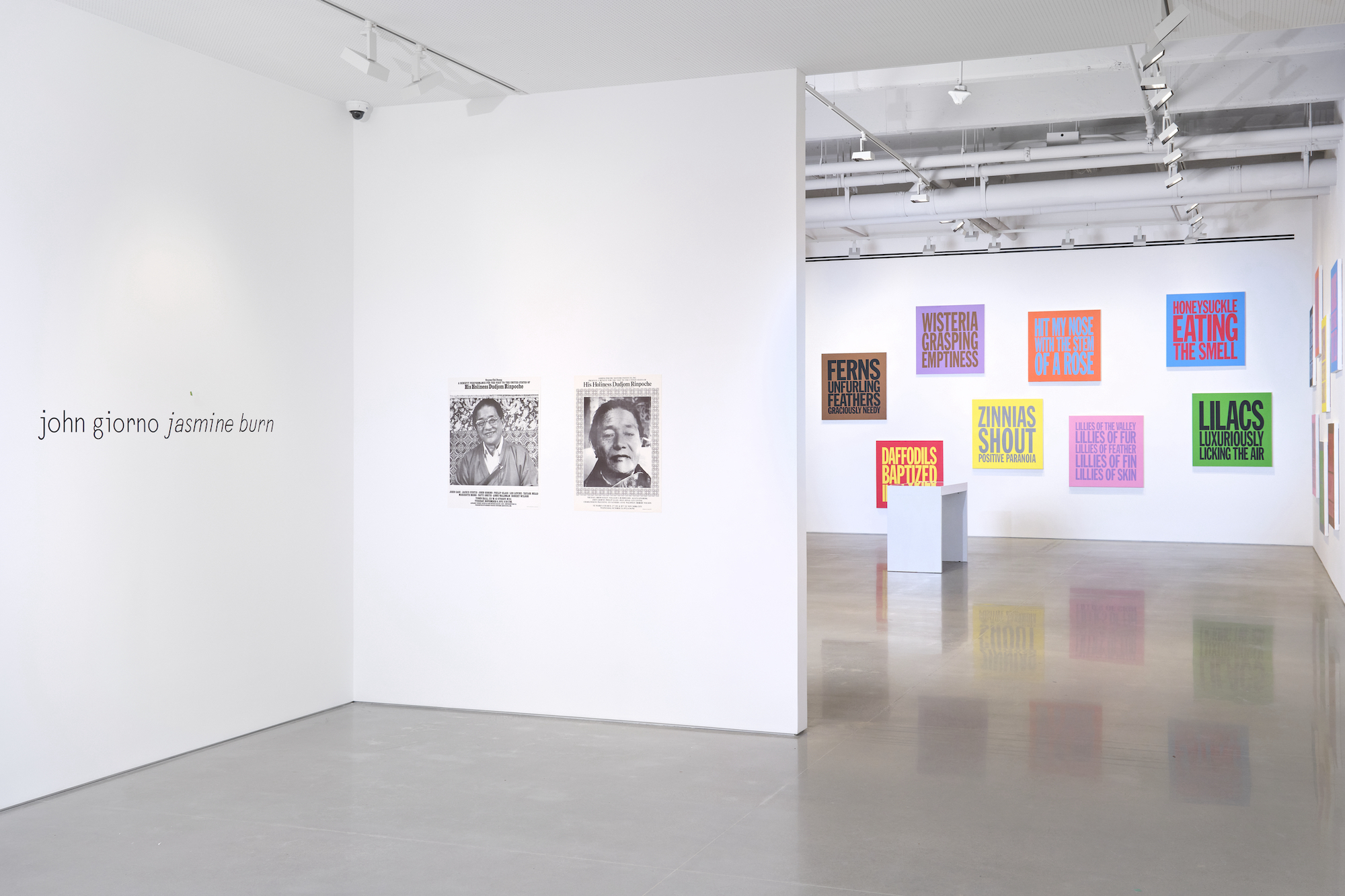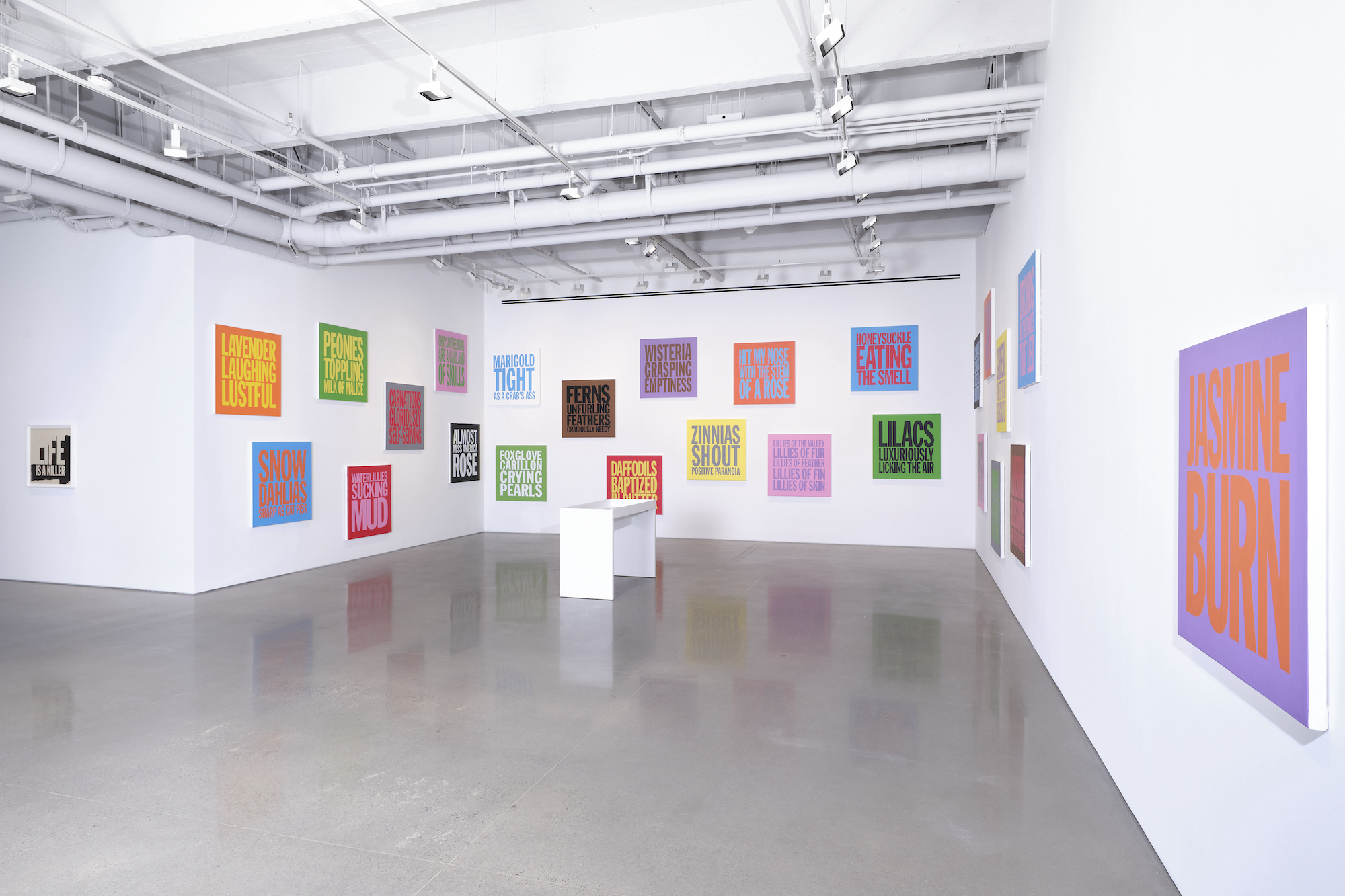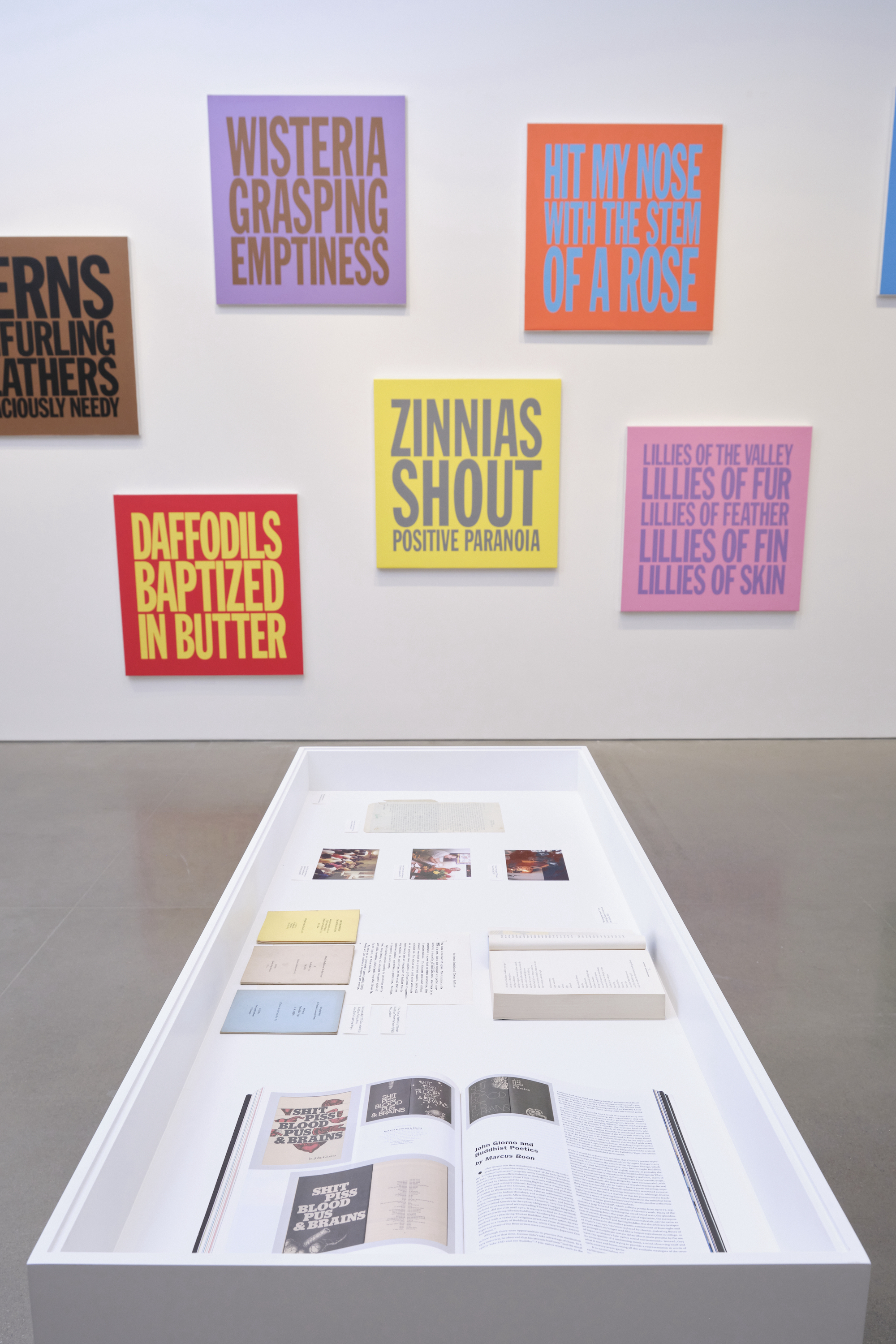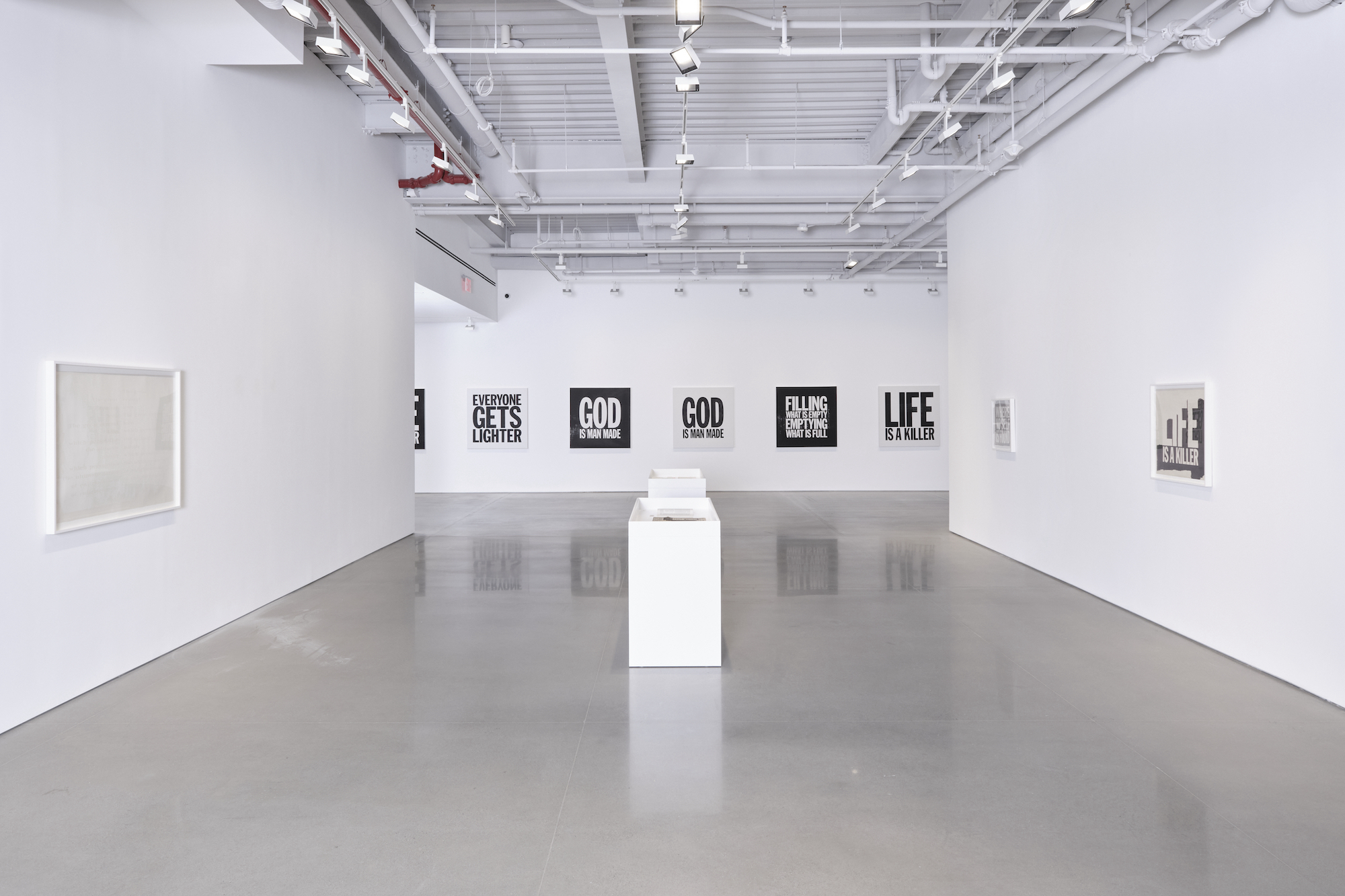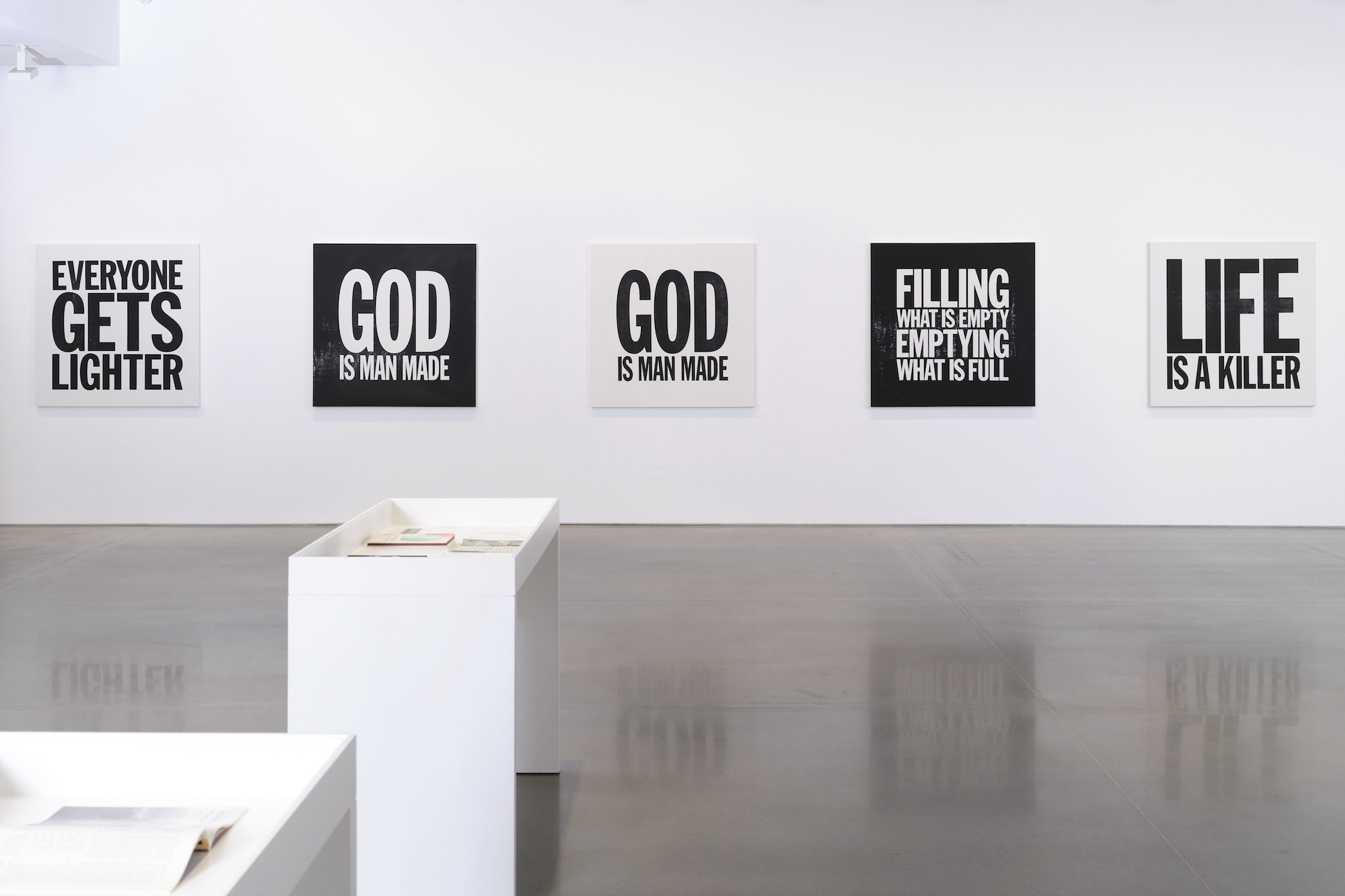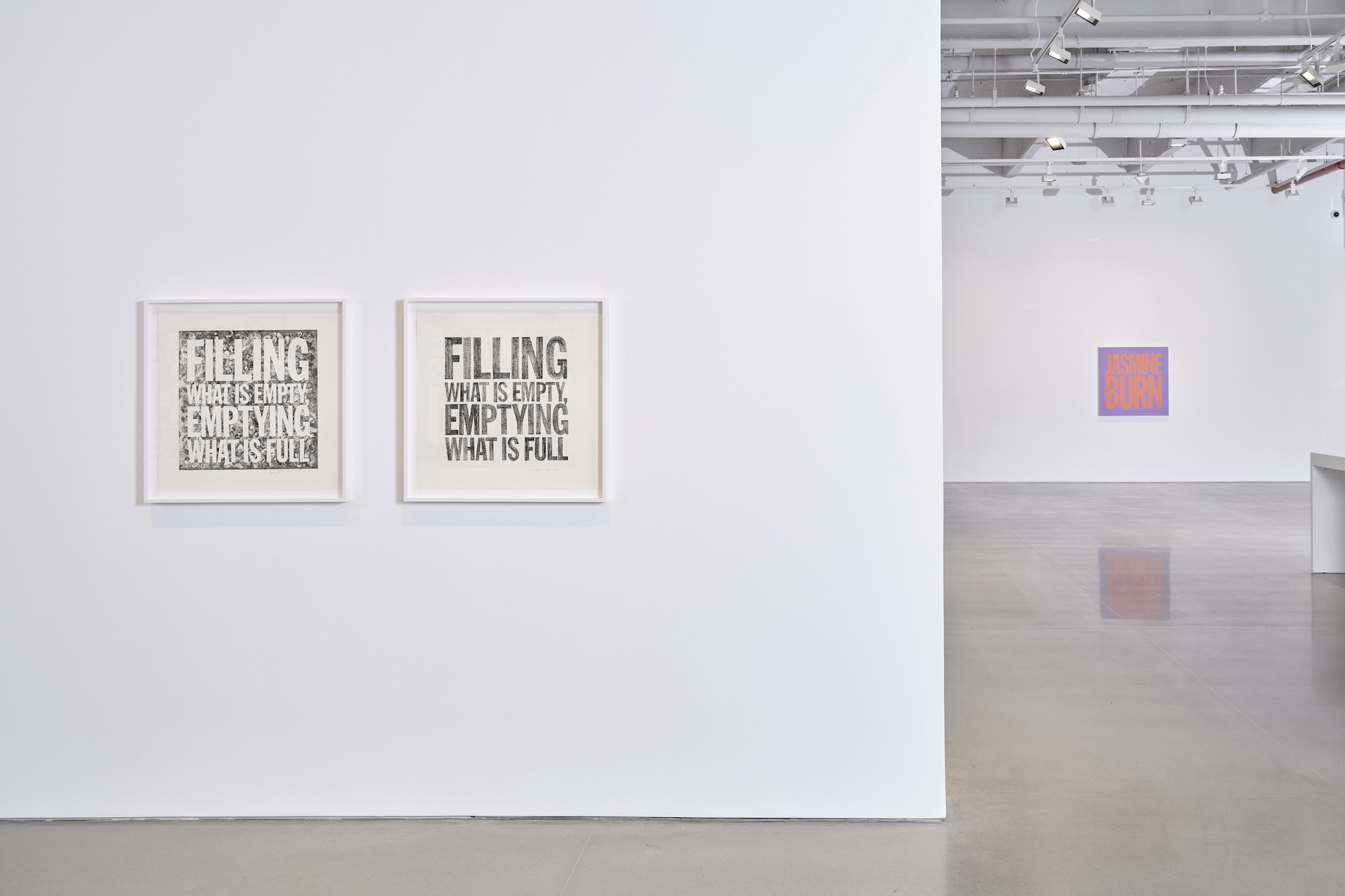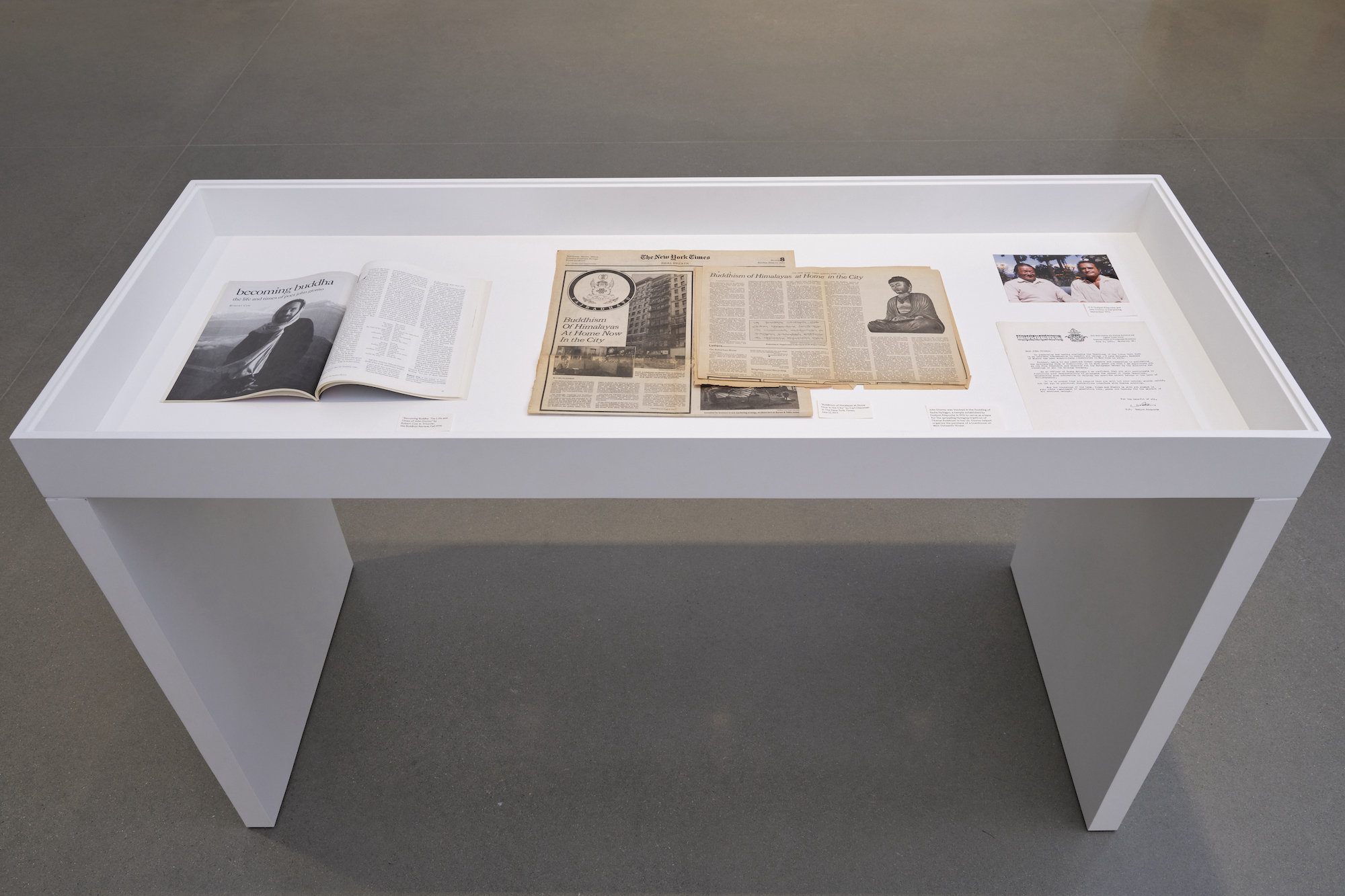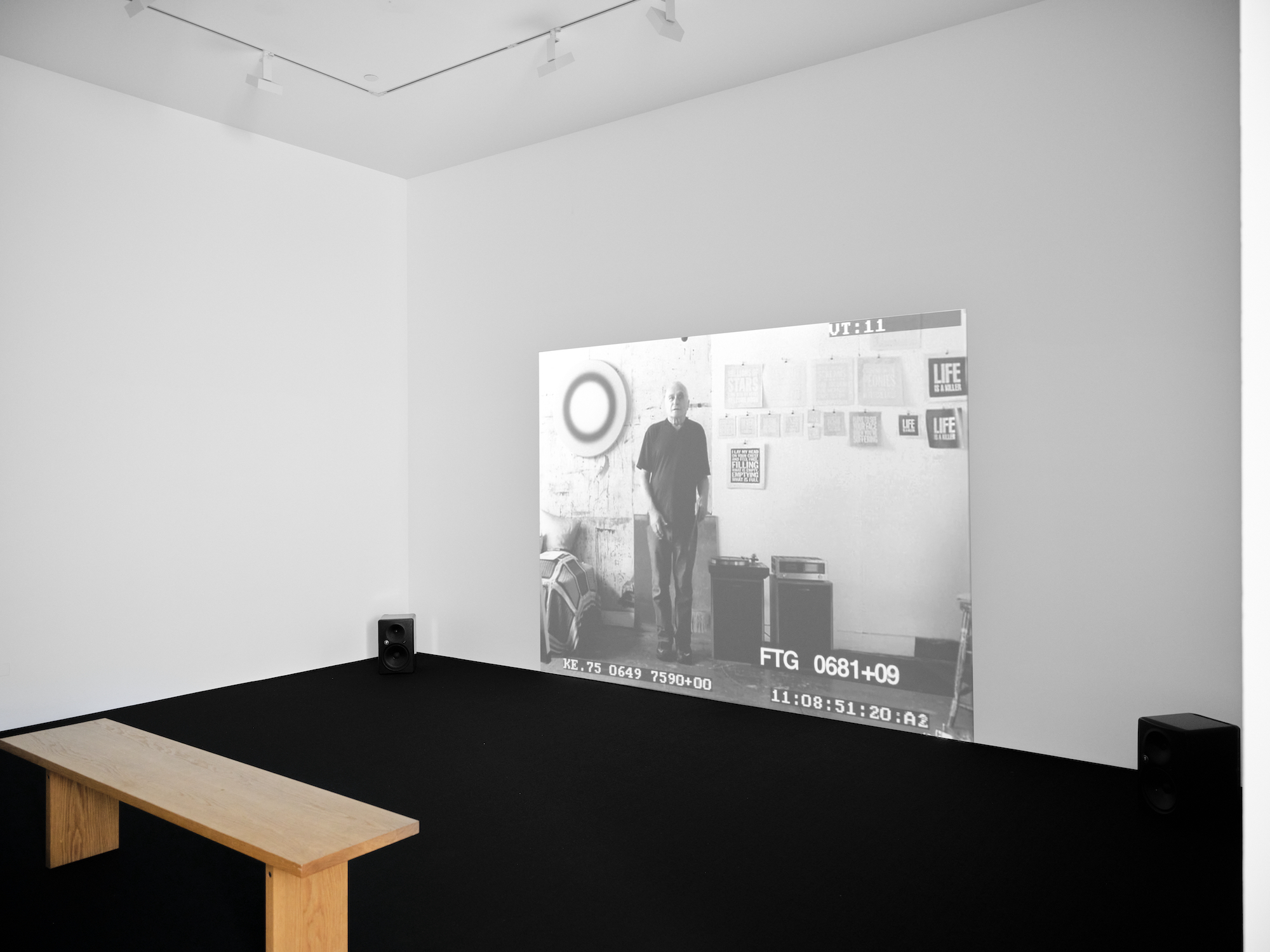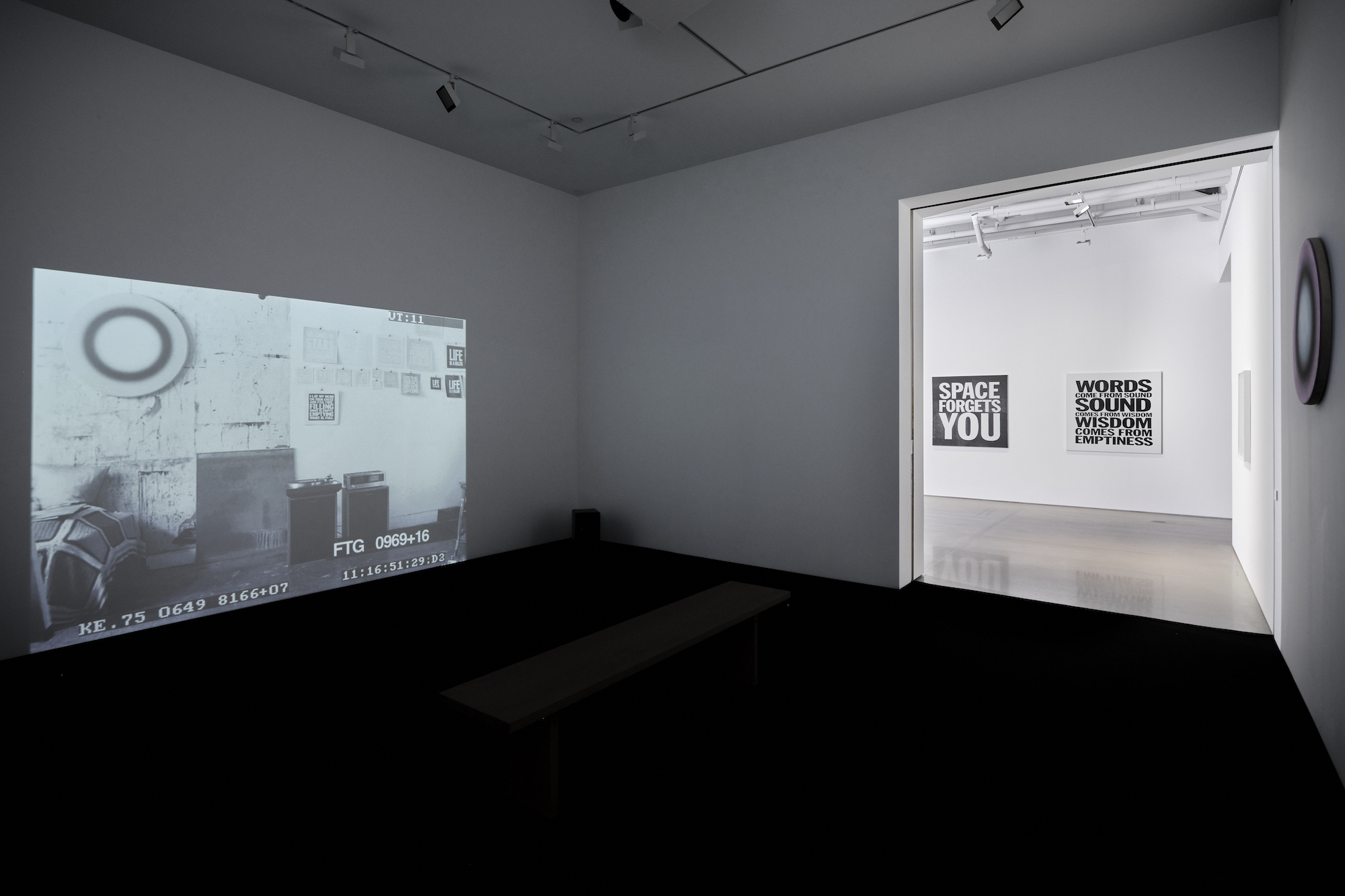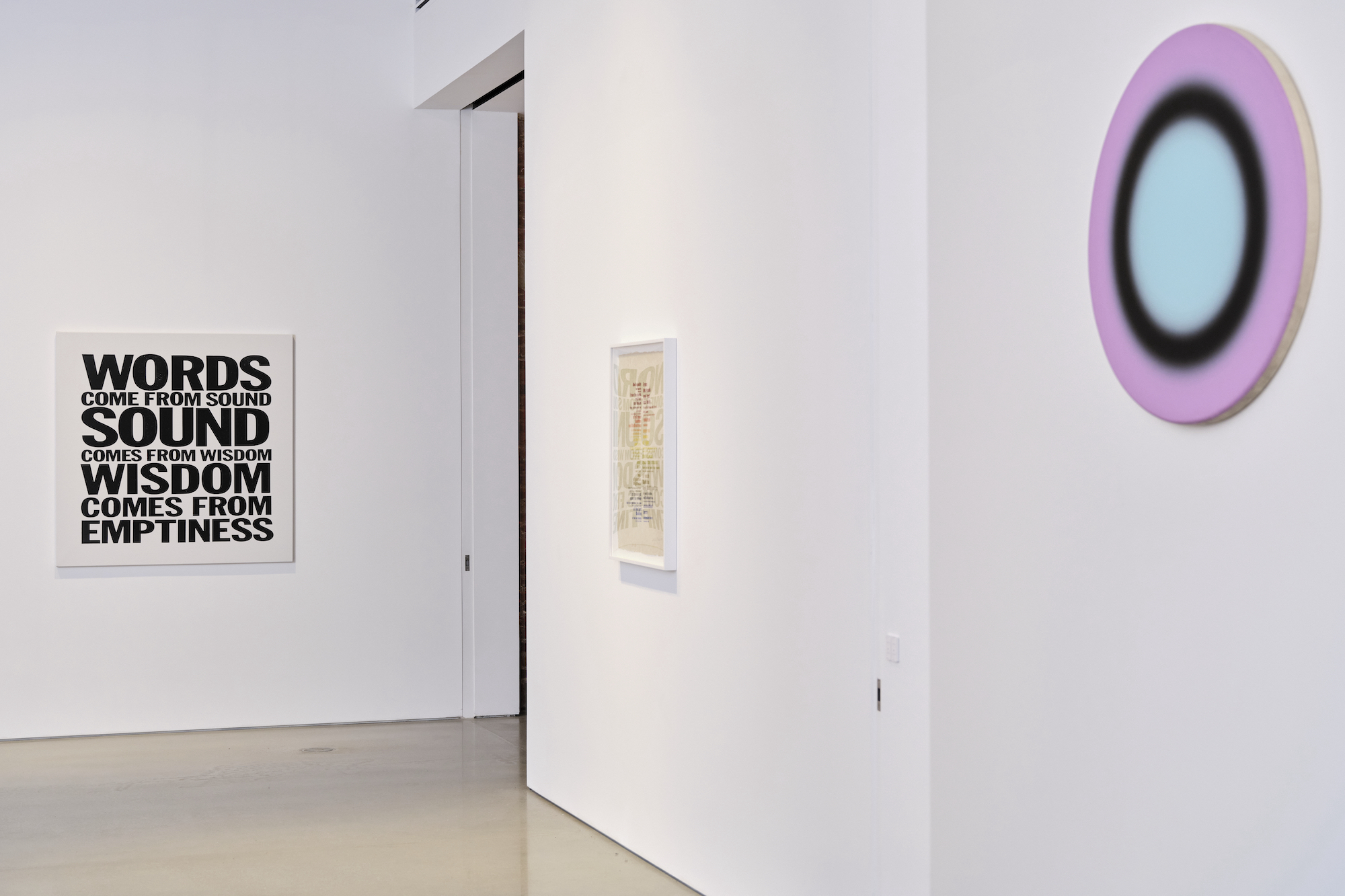kurimanzutto, New York
March 7 - April 13, 2024
March 7 - April 13, 2024
This exhibition departs from John Giorno’s long-standing relationship to Buddhist spirituality and explores the ways in which it informs his work.
On view are Giorno's Perfect Flowers Paintings, Black and White Poem Paintings, as well as rarely-seen early silkscreen prints from the 1970s and archival materials related to his life as a Buddhist. Also on view are works by two artist-peers: Rirkrit Tiravanija’s JG Reads (2008) a 10-hour film about Giorno, and a “target” painting by Ugo Rondinone, his long-time partner and husband. This exhibition is curated by GPS Director Anthony Huberman.
At the crossroads of poetry, visual art, music, and performance, John Giorno’s work targets a broad audience, redefining the capabilities of linguistic forms. Born in New York, where he lived his entire life, Giorno is recognized as a pioneer in the field of performance poetry and spoken word, as well as a major activist for AIDS awareness, LGBTQ+ rights, and anti-war struggles. Giorno’s relationships with artists such as Andy Warhol, Jasper Johns, and Robert Rauschenberg profoundly influenced his work and encouraged him to bring poetry off the printed page and into visual, musical, and political realms.
The entire 25-part set of Giorno’s luminous Perfect Flowers Paintings transform verses into paintings. Phrases such as DAFFODILS BAPTIZED IN BUTTER, LILACS LUXURIOUSLY LICKING THE AIR, and JASMINE BURN are amplified by vibrant colored surfaces. In Buddhism, flowers are often used as votive offerings and represent the impermanent nature of life, the transient beauty of the natural world, and the cycles of birth, death, and reincarnation. In Giorno’s paintings, the purity of these flowers is enmeshed within the politically- and sexually-charged context of an American pop/punk sensibility.
On view are Giorno's Perfect Flowers Paintings, Black and White Poem Paintings, as well as rarely-seen early silkscreen prints from the 1970s and archival materials related to his life as a Buddhist. Also on view are works by two artist-peers: Rirkrit Tiravanija’s JG Reads (2008) a 10-hour film about Giorno, and a “target” painting by Ugo Rondinone, his long-time partner and husband. This exhibition is curated by GPS Director Anthony Huberman.
At the crossroads of poetry, visual art, music, and performance, John Giorno’s work targets a broad audience, redefining the capabilities of linguistic forms. Born in New York, where he lived his entire life, Giorno is recognized as a pioneer in the field of performance poetry and spoken word, as well as a major activist for AIDS awareness, LGBTQ+ rights, and anti-war struggles. Giorno’s relationships with artists such as Andy Warhol, Jasper Johns, and Robert Rauschenberg profoundly influenced his work and encouraged him to bring poetry off the printed page and into visual, musical, and political realms.
The entire 25-part set of Giorno’s luminous Perfect Flowers Paintings transform verses into paintings. Phrases such as DAFFODILS BAPTIZED IN BUTTER, LILACS LUXURIOUSLY LICKING THE AIR, and JASMINE BURN are amplified by vibrant colored surfaces. In Buddhism, flowers are often used as votive offerings and represent the impermanent nature of life, the transient beauty of the natural world, and the cycles of birth, death, and reincarnation. In Giorno’s paintings, the purity of these flowers is enmeshed within the politically- and sexually-charged context of an American pop/punk sensibility.
In contrast to the brilliantly colorful Flower Paintings are the Black and White Poem Paintings. Done in the early 2010s, these silkscreen prints on canvas combined curt and contradictory messages excerpted from his poetry that strike readers as imperative, deadpan, sacred, and profane. A phrase like LIFE IS A KILLER rejects Western dichotomies that tend to cling to life rather than death, and instead embraces the fundamental emptiness and equal interdependence of all things. The early prints, which Giorno produced between 1968 and 1974, incorporated texts with political and sexual content that the artist found in newspapers, magazine articles, and personal ads. Many of these used double columns of text. Since his poems were scores, meant to be spoken and performed, the experience of listening to the two columns simultaneously recited recalled, for the artist, the sound of ritual Buddhist chanting.
Giorno was introduced to Buddhist thought through peers like Allen Ginsberg. In 1971, with Ginsberg and others, Giorno first visited India and Nepal, where he met the Dalai Lama to whom he gifted a copy of his book Balling Buddha. On a later trip, he met His Holiness Dudjom Rinpoche, the head of the oldest of the four major traditions of Tibetan Buddhism. Rinpoche gave Giorno the name Wisdom Jewel and became his teacher and close friend. In New York, with funds raised from wealthy American practitioners, he helped open Yeshe Nyingpo, a dharma center on West 16th Street. In 1982, he set up a shrine and invited lamas to give teachings at 222 Bowery in the loft of his downstairs neighbor and close friend William Burroughs. In Giorno’s own loft on the third floor, annual fire pujas brought together hundreds of Tibetan Buddhists adherents gathered around the fireplace.
Click here for more information
Giorno was introduced to Buddhist thought through peers like Allen Ginsberg. In 1971, with Ginsberg and others, Giorno first visited India and Nepal, where he met the Dalai Lama to whom he gifted a copy of his book Balling Buddha. On a later trip, he met His Holiness Dudjom Rinpoche, the head of the oldest of the four major traditions of Tibetan Buddhism. Rinpoche gave Giorno the name Wisdom Jewel and became his teacher and close friend. In New York, with funds raised from wealthy American practitioners, he helped open Yeshe Nyingpo, a dharma center on West 16th Street. In 1982, he set up a shrine and invited lamas to give teachings at 222 Bowery in the loft of his downstairs neighbor and close friend William Burroughs. In Giorno’s own loft on the third floor, annual fire pujas brought together hundreds of Tibetan Buddhists adherents gathered around the fireplace.
Click here for more information
